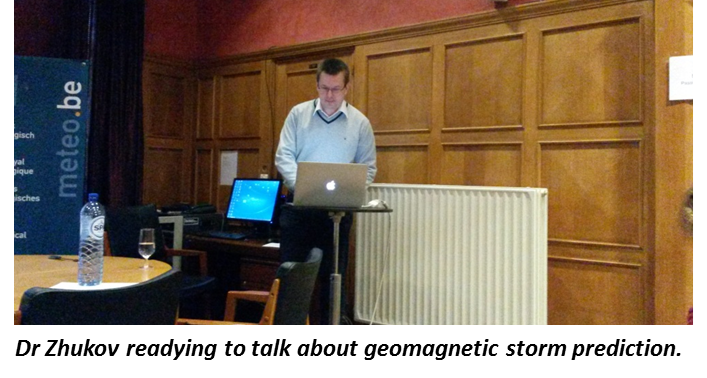On 31 January, the STCE Workshop "Geomagnetic storms and solar eruptions: from Sun to Earth" took place in the cozy meeting room of the RMI. Thirty-nine (39!) participants got submerged in the modeling of drivers of geomagnetic storms and solar storms as well as their impact on the geospace environment. The workshop was chaired by Dr Véronique Delouille (ROB), and consisted of 7 talks each followed by a few minutes of Q and A. An overview and links to some of the talks can be found at the workshop's website.
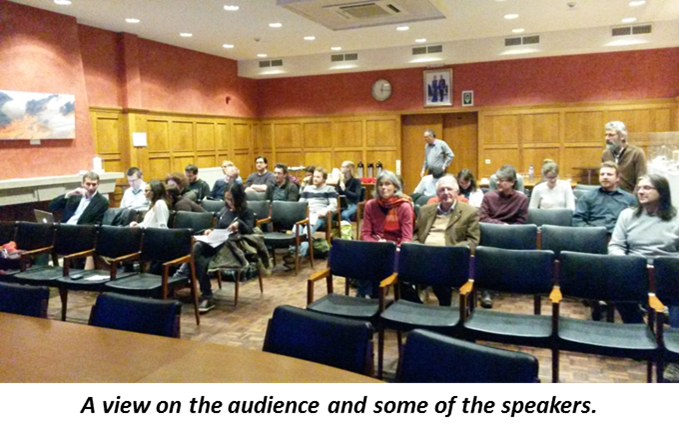
Dr Raluca Ilie from the University of Illinois introduced the SWMF (Space Weather Modeling Framework) which is designed to simulate the global space environment. She impressed the audience with the encouraging results obtained so far, as well as with the 600.000 lines of source code that were written for the model. Next came Dr Marilena Mierla (ROB) who focused on two gaps which we still do not understand very well: what happens between Sun and Earth (propagation of the coronal mass ejection (CME) and interaction with the background solar wind), and the coupling mechanisms between the CME as it arrives at Earth and the subsequent geomagnetic disturbance it may cause.
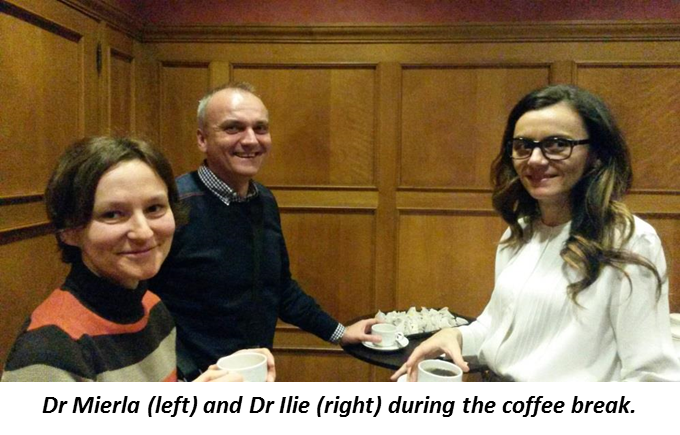
After the coffee break, Professor Farzad Kamalabadi (University of Illinois) gave an overview of the ICON mission (Ionospheric Connection Explorer) which is due for launch later this year. ICON's main task will be to improve our understanding how the planetary weather dynamo works and how it controls our space environment. Also the modeling of Geomagnetically Induced Currents (GIC) from ground-based magnetometer measurements was discussed. The morning session was concluded by Professor Joseph Lemaire (BISA and UCL) who illustrated the results from the EPT (Energetic Particle Telescope) on board the PROBA-V satellite with the St-Patrick's Day storm of 17 March 2015, the strongest geomagnetic storm so far this solar cycle.
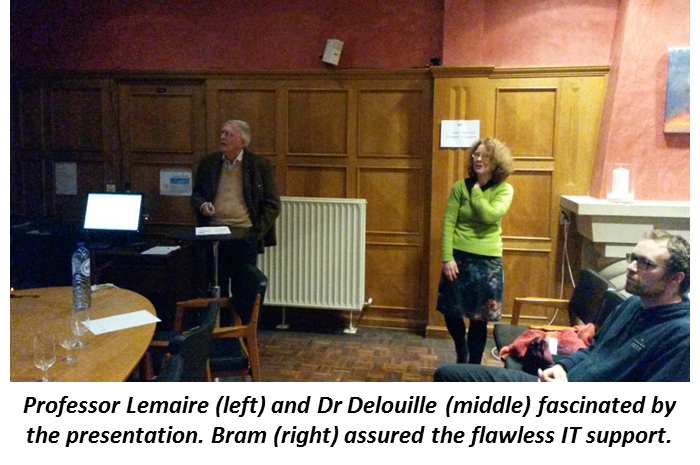
The RMI kindly served the lunch break in the canteen. After soup, a myriad of sandwiches, and a revealing analysis of fingertalk, the participants were ready for more (talks). They were entertained by Dr Herbert Gunnell (BISA) who discussed the upward and downward current regions of the aurora. Dr Jasmina Magdalenic (ROB) presented the EUHFORIA model. This "EUropean Heliospheric FORecasting Information Asset", developed by the KUL, predicts the space conditions near Earth by using three models: a coronal model, a magnetohydrodynamic heliosphere model, and an eruption model that allows the injection of CMEs. The model gives already very good results, as demonstrated with the recent arrival of a high speed stream from a coronal hole. Some observational tools such as LOFAR (LOw Frequency ARray) were also highlighted.
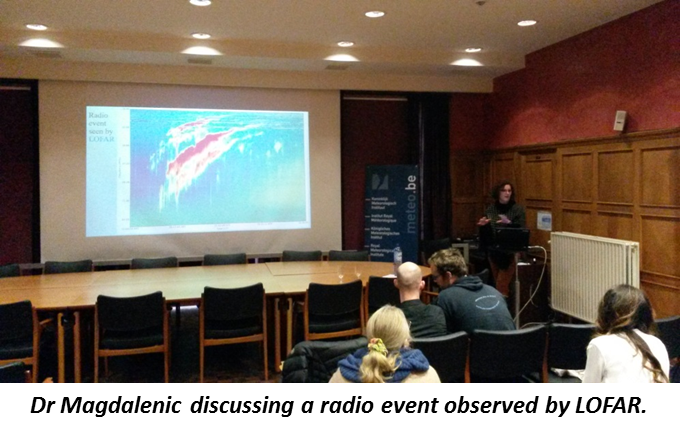
Dr Andrei Zhukov (ROB) concluded the workshop with a talk on the prediction of geomagnetic storms from the orientation and intensity of Bz, i.e. the north-south component of the interplanetary magnetic field. Indeed, a negative, strong and long-lasting Bz is required for a strong geomagnetic storm. Though we may have a reasonably educated guess of this parameter close to the solar surface (solar eruption, CME shape), various factors introduce uncertainties in the CME's Bz when it is en route to Earth. Many more case-studies will be required.
